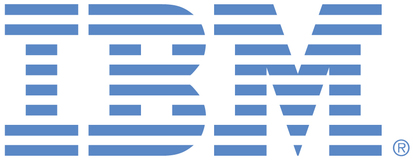
This portal is to open public enhancement requests against products and services offered by the IBM Data Platform organization. To view all of your ideas submitted to IBM, create and manage groups of Ideas, or create an idea explicitly set to be either visible by all (public) or visible only to you and IBM (private), use the IBM Unified Ideas Portal (https://ideas.ibm.com).
Shape the future of IBM!
We invite you to shape the future of IBM, including product roadmaps, by submitting ideas that matter to you the most. Here's how it works:
Search existing ideas
Start by searching and reviewing ideas and requests to enhance a product or service. Take a look at ideas others have posted, and add a comment, vote, or subscribe to updates on them if they matter to you. If you can't find what you are looking for,
Post your ideas
Post ideas and requests to enhance a product or service. Take a look at ideas others have posted and upvote them if they matter to you,
Post an idea
Upvote ideas that matter most to you
Get feedback from the IBM team to refine your idea
Specific links you will want to bookmark for future use
Welcome to the IBM Ideas Portal (https://www.ibm.com/ideas) - Use this site to find out additional information and details about the IBM Ideas process and statuses.
IBM Unified Ideas Portal (https://ideas.ibm.com) - Use this site to view all of your ideas, create new ideas for any IBM product, or search for ideas across all of IBM.
ideasibm@us.ibm.com - Use this email to suggest enhancements to the Ideas process or request help from IBM for submitting your Ideas.
IBM Employees should enter Ideas at https://ideas.ibm.com

Documentation had been updated in Symphony 7.2 release to support the scenario.
Documentation will be updated in Knowledge Center.
Customer shared more information for this request, Support appends it here:
1) TCP supports auto-negotiation and packet fragmentation and re-assembly. This can be controlled by switches, but the usual error; you transmit at the wrong packet size because you don't catch the misconfiguration.
2) UPD COULD support something similar in the app (just like you support recovery), with the errno EMSGSIZE error. It can be pretty simple, done during socket accept and only basic support for MTU 9000 or 1500, or more sophisticated, where you hone in on the exact/optimal size. There are at least 4 sizes that might work. Complicating this, you COULD check for this error on every sendto(), but recovery gets really ugly then. And, since this would normally ONLY be done at socket setup, done once (on each side) and no performance impacts after for old users. (Send dummy packet of 65K, get EMSGSIZE error and retrieve IP_MTU and use this number for the specific server going forward).
3) For multi-homed environments (basically a network for public and network for grid), which we always set up, static routes don't work. They used to… The latest technique is to include the “Source IP” in the socket connection (the local IP), and that forces the algorithms to select that IP for the traffic, unless down.
4) All this available in both C and Java (not sure what Symphony was developed in.
Some useful links:
C to get MTU size and test connectivity (local MTU): http://www.tenouk.com/Module43a.html
GREAT description of Linux IP_MTU and IP_MTUDISCOVERY in Linux http://man7.org/linux/man-pages/man7/ip.7.html
Linux IP_MTU description. http://www.skrenta.com/rt/man/udp.4.html
Windows SO_MAX_MSG_SIZE option (they never do it the same): https://msdn.microsoft.com/en-us/library/windows/desktop/ms738544(v=vs.85).aspx
Java to get interface info (including MTU, but suspect defined not open socket): http://www.java-tips.org/java-se-tips-100019/31-java-net/1767-programmatic-access-to-network-parameters.html